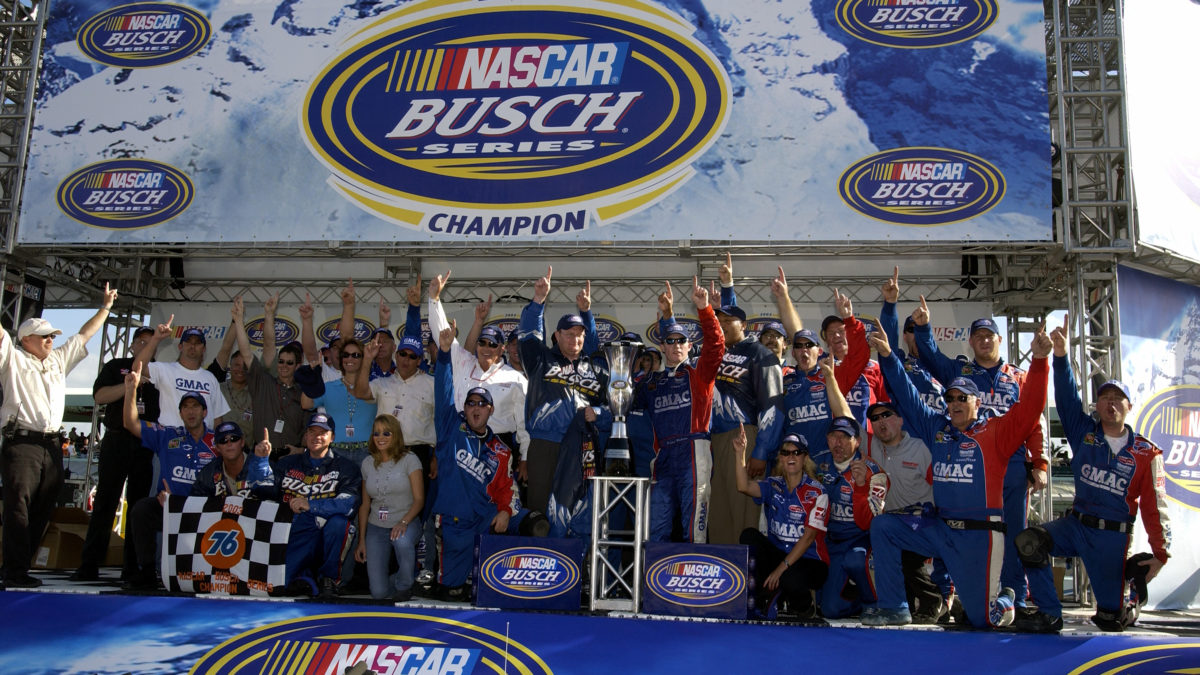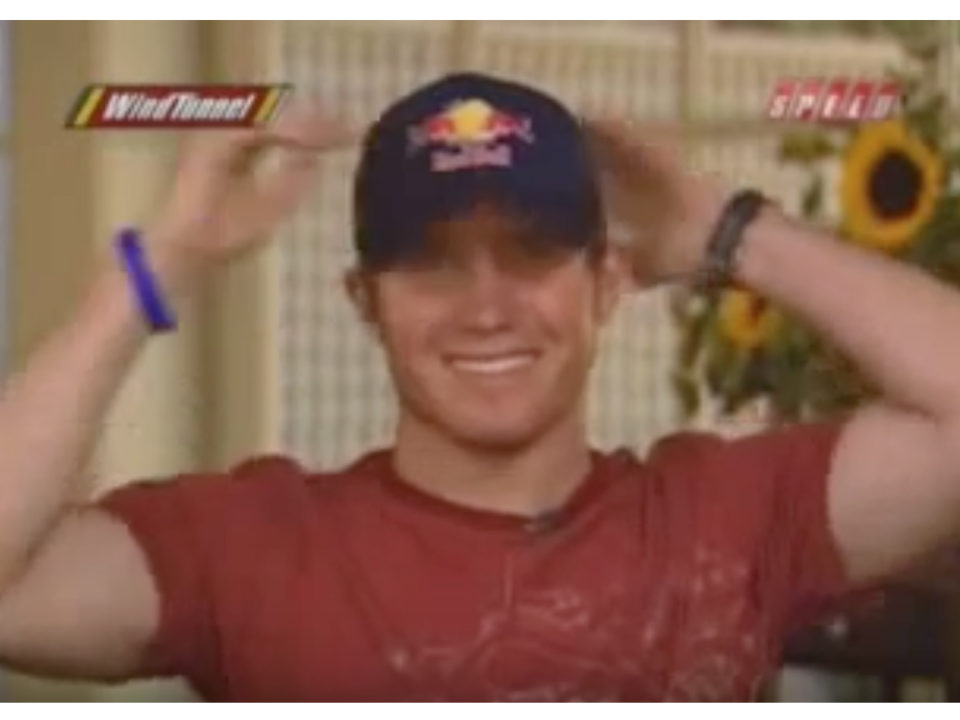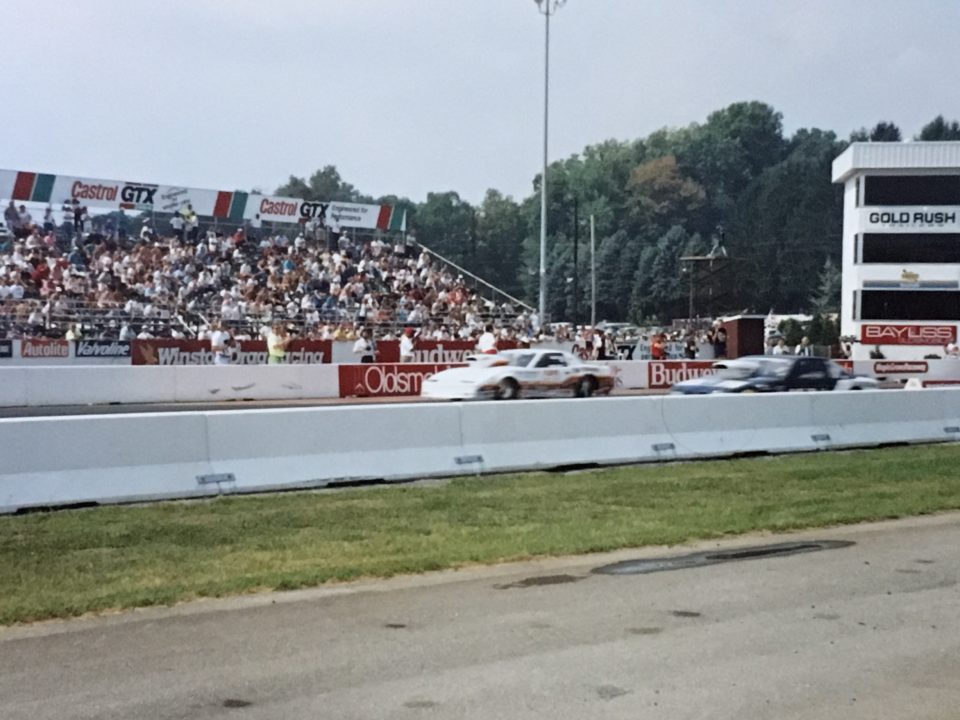
End of Jayski? And the Time We Scooped Him and the Rest of the National Media.
January 31, 2019Most people including those working within NASCAR and perhaps even many associated with Hendrick Motorsports (HMS) and JR Motorsports (JRM) likely don’t recognize that the success built in the historic 2003 NASCAR Busch Series season with car owner Ricky Hendrick, driver Brian Vickers, crew chief Lance McGrew and team manager/spotter Michael Landis played a varying role in setting the stage for future success of multiple NASCAR drivers and teams including JR Motorsports, the championship NASCAR Xfinity Series program co-owned by Dale Earnhardt, Jr., Kelley Earnhardt and Rick Hendrick. This is a multi-part narrative of how those programs began, evolved and eventually intersected, and their direct and indirect impacts on some of the most famous modern NASCAR drivers and their respective career paths.
PART 1 – BACKGROUND, CHAMPIONSHIP & RESULTS:

While HMS fielded part-time entries in the NASCAR Busch Series for various drivers dating back to 1984, there was a significant lull thru the 1990’s decade and the genesis of the “modern” HMS Busch Series program began in 1999 as the #24 entry with Gordon-Evernham Motorsports (using HMS equipment), which morphed into JG Motorsports in 2000 with the departure of Evernham from HMS and then finally became wholly owned and operated by Hendrick Motorsports in 2001. This team was originally founded to facilitate the interests of Jeff Gordon and his crew chief Ray Evernham as well as young driver Ricky Hendrick (son of team owner Rick Hendrick) and ran part-time with several different drivers for those first 3 seasons from 1999-2001. Jeff Gordon won 1 race in each of the first 2 seasons in ’99 and ’00, the team won no races in 2001 and won one additional race with regular Truck Series driver Jack Sprague in 2002.
In 2002, the second season as an entirely Hendrick Motorsports-owned/operated program, the team initially fielded the #5 entry full-time driven by 3 different drivers due to injuries sustained by primary driver Ricky Hendrick and earned no wins, only 3 Top 5 finishes and a 20th place finish in the points standings. However, a key step late in the season that provided some insight into the team’s potential was their hiring of widely respected veteran David Green to drive the final six races in 2002, after Ricky Hendrick officially retired as a driver. Green’s impact was immediate, as he managed to secure the team’s only 3 Top 5’s that season. That performance also helped lead to Green being hired full-time for 2003 to drive the #37 for Brewco Motorsports, after Hendrick passed on re-signing Green to seek a younger driver in 2003 to develop for its Cup program in the mold of Jeff Gordon/Jimmie Johnson. While even we didn’t realize this at the time, in hindsight in many regards Brian Vickers was unofficially the first “young development driver” for Hendrick Motorsports in the modern era since both Jeff Gordon and Jimmie Johnson had driven for other teams in the NASCAR Busch Series before being signed to drive for HMS directly in the NASCAR Cup Series.
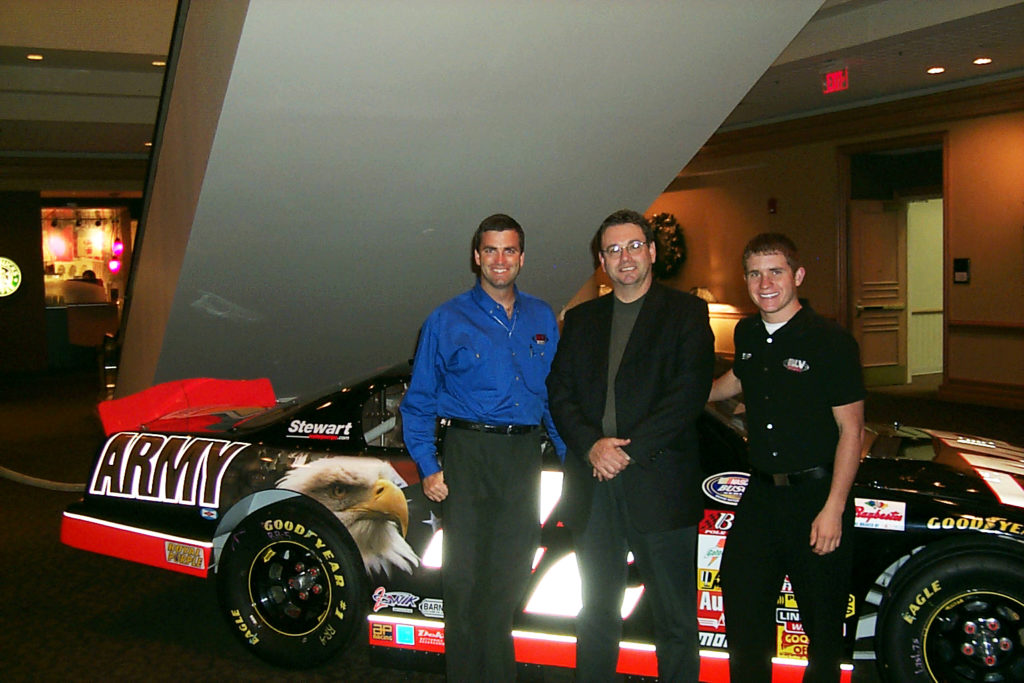
Coinciding with the developments occurring at HMS in late 2002 was the unexpected and sudden availability of Brian Vickers himself for the 2003 season, a determination that evolved directly from events related to the U.S. Army’s NASCAR sponsorship decisions in late 2002 for the 2003 season. Another little known fact in the sport is that our management team for Brian Vickers was responsible (working together with several parties including Hal Price and Dave Goodman) for successfully developing the U.S. Army’s interest/commitment in NASCAR during the 2002 Busch Series season, thru a non-funded b2b partnership Brian’s first primary sponsor – Engineered Machined Products (EMP) had with the U.S. Army TARDEC/National Automotive Center (NAC). But we learned in late September 2002 that our 18+ months’ long effort to secure the U.S. Army’s formal interest in NASCAR had succeeded – but that sponsorship had been skewed elsewhere to the Cup Series, something neither BLV Motorsports nor Brian Vickers was prepared for. That narrative is an entirely separate story, but those circumstances and their timing so late in the season forced us to immediately begin working on alternative options for team members for 2003. We immediately identified the #5 team as being the best opportunity for Brian himself, thus set out to convince Ricky and HMS that Brian was their best option.
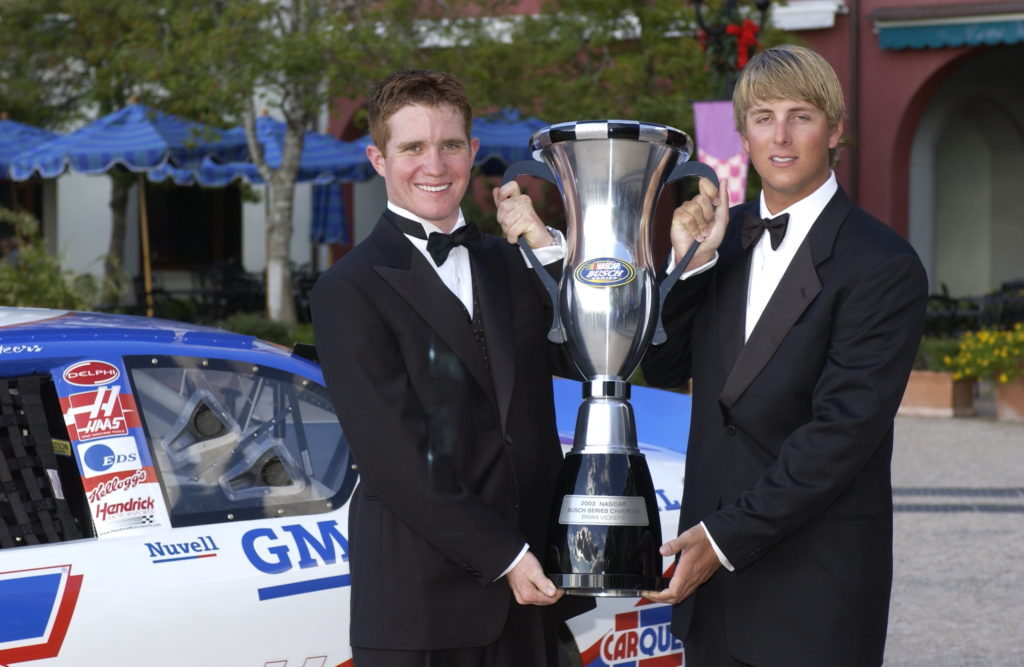
By late 2002 after the season had concluded, against tremendous odds thru the diligence of Brian, our BLV Motorsports team and their on-track success later that season running a part-time, family-owned team with a NASCAR Busch Series rookie, we were indeed successful in convincing “rookie” team owner Ricky Hendrick to hire “rookie” Brian Vickers (who technically wasn’t eligible for rookie driver status due to having run a part-time schedule of 21 races in 2002).
In 2003, Vickers and the No. 5 GMAC/Carquest team quickly developed into a championship contender as one of the most competitive seasons in series history unfolded, ultimately winning 3 races, earning 13 Top 5’s and capturing the 2003 driver’s championship by just 14 points (ironically over David Green, who was a friend/peer of both Vickers and Hendrick). At the time, that marked the second closest points margin in series history and made Vickers the youngest NASCAR professional champion in the sport’s history at 20 years of age! It was a remarkable turnaround for a 20th place team that was previously winless, with a driver who had never competed full-time or even raced on many of the NASCAR circuit’s tracks!
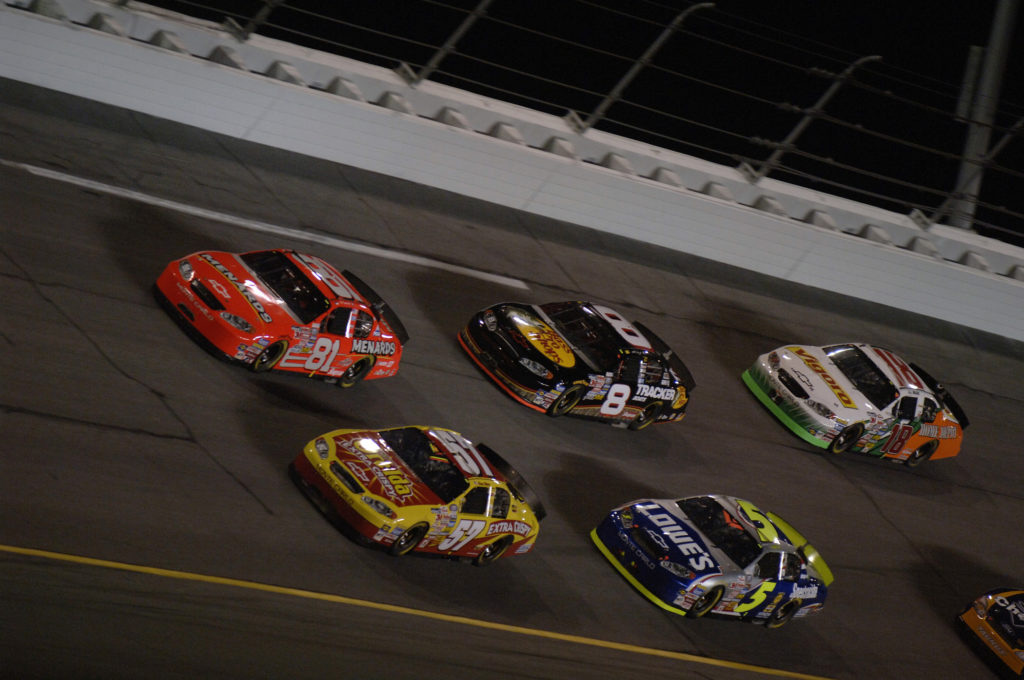
When Vickers was promoted to the Cup Series in 2004 with the #25 team, Hendrick placed developmental driver Kyle Busch with what essentially was Vickers’ same intact #5 NASCAR Busch Series championship-winning team led by crew chief Lance McGrew. Not surprisingly, between the team and driver’s collective abilities, they won 5 more races with a runner-up finish in the driver’s championship in 2004. The #5 team continued to compete full-time in 2005 but with 2 major changes: primarily using a pool of “development” drivers that comprised HMS’ new “driver development program” who would each compete part-time, and McGrew left to rejoin Vickers as crew chief of the #25 Cup Series team. Outside of 1 win at Charlotte in May by Kyle Busch, the #5 HMS Busch Series team was otherwise entirely uncompetitive thru-out 2005. In 2006, Kyle Busch returned to compete full-time in the #5 Busch Series entry as well as the HMS #5 Cup Series entry, capturing 1 win that season. In 2007, the final season for HMS’ NASCAR Busch/Nationwide (Xfinity) Series program, the #5 ran part-time only at the joint Cup-Nationwide events and Kyle Busch earned the team’s final 4 wins – also his final season with Hendrick Motorsports.
From 2004-2008, HMS also fielded a #48 Busch/Nationwide entry part-time for various drivers, with no wins.
From 2005-2007, HMS also fielded a 3rd part-time entry in the series as the #57 driven by various drivers including Vickers, again with no wins.
Between 2003-2004, HMS also facilitated a driver/technical alliance with NEMCO Motorsports (owned by former HMS driver Joe Nemechek) and it’s #87 entry in 13 events to field various HMS developmental drivers – including notably Kyle Busch, who performed impressively, but again with no wins in those HMS-affiliated race entries.

In 11 cumulative seasons of competition in the series between 1999-2007, HMS Busch/Nationwide (Xfinity) Series entries won a total of 1 driver’s championship and 17 races. The #5 team captured 14 (82%) of those wins, all earned between 2003-2007 by drivers Brian Vickers and Kyle Busch [and 8 of those 14 wins (57%) led by Vickers’ original HMS crew chief Lance McGrew]. HMS also won one additional series race in 2009 in a one-off #80 entry driven at Daytona by Tony Stewart, for which McGrew also served as crew chief.
In this narrative and similar timeframe, it should also be noted that Dale Earnhardt, Jr. was a co-owner (together with Dale Earnhardt, Sr.’s wife Teresa) of Chance 2 Motorsports – a Busch (Xfinity) Series program founded in 2003 as an affiliate of the DEI (Dale Earnhardt Inc.) Cup Series team. In 2003, Chance 2 competed part-time fielding the #8 and #81 entries for several different drivers in 14 events with limited success – although Dale, Jr. himself won all 3 of the restrictor-plate races driving the #8 that season (not surprising given the consistent dominance exhibited by DEI at Daytona/Talladega and Earnhardt, Jr.’s restrictor plate race success). Chance 2 would then hire Martin Truex, Jr. as their full-time driver of the #8 team for the 2004-2005 seasons, and Truex/Chance 2 ironically beat the #5 HMS team with driver Kyle Busch for the 2004 driver’s championship before repeating as series champions in 2005 to propel Truex, Jr.’s career as another eventual Cup Series champion. Chance 2 Motorsports was disbanded after that 2005 season.
PART 2 – INSIDER PERSPECTIVES:
While probably not common knowledge, internally it was well-known that certain HMS executives including team owner Rick Hendrick had never been the most ardent supporters of HMS’ Busch/Nationwide/Xfinity efforts and in some respects simply “tolerated” the program’s presence with a deference towards understandably maintaining the organization’s focus upon the Cup Series. This disposition even had an impact for the 2003 season because when his son Ricky Hendrick retired from driving following an injury and temporary comeback during the 2002 season, he was then appointed owner of the No. 5 HMS Busch Series team. But while selecting his replacement to drive the car in 2003, Ricky was effectively told he was going to be overruled by his father’s and team’s choice of another driver (reportedly Casey Mears). This led to the oft-told story of the internal family debate where Ricky insisted that if he was team owner, it should be his decision and he had already decided they should hire Brian Vickers. Rick eventually relented, and Ricky proved his innate talent as a team owner as the Ricky Hendrick/Brian Vickers tandem promptly went on to stun many people (including Rick) and win Hendrick Motorsports’ first (and only) series championship in their first year together in 2003. Another critical benchmark was a key internal “clearing the air” meeting held early in the 2003 season [approximately in the same timeframe as the March race at Texas, where Vickers and team infamously (by broad consensus) joined a dubious list of drivers likely robbed of victory by a discretionary and highly controversial officiating call by NASCAR]. In that meeting, the #5 team principals lobbied HMS leadership to provide the team with their “full support” in order to compete against the other top Busch Series teams including the Cup Series-affiliated drivers/teams. They believed they were capable of competing for the championship and had already begun demonstrating that on-track (such as their dominant performance at Texas in just their 6th race together) – something no one including Rick Hendrick by his own admission ever expected that quickly in their first year together, and the #5 team simply wanted the rest of the organization and team departments to immediately “buy-in” to that mission/objective – which then happened.
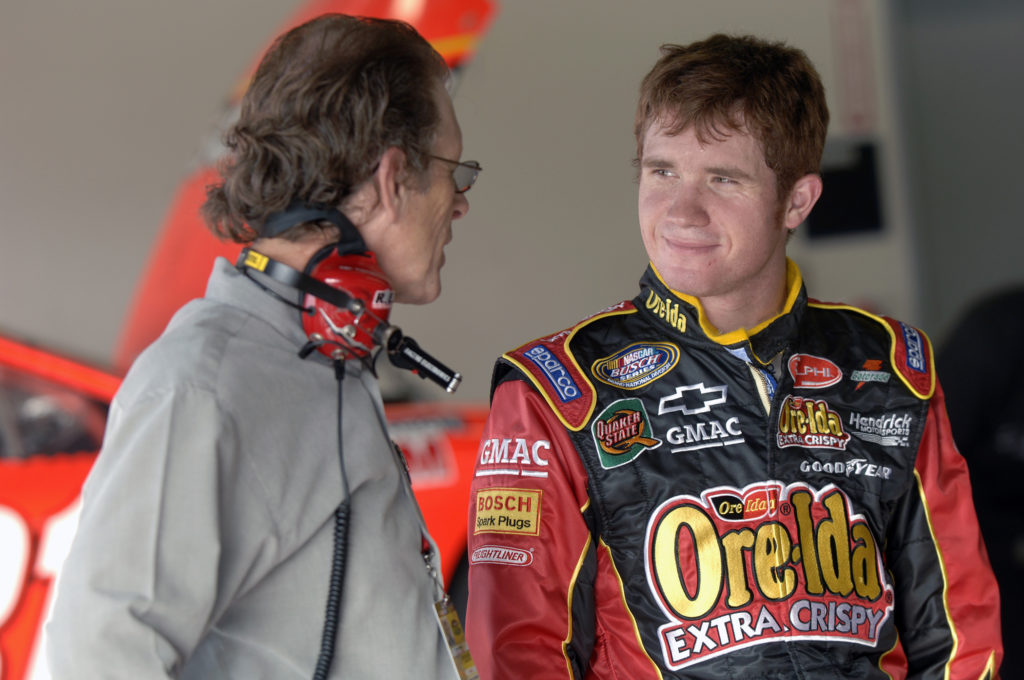
When Brian was promptly promoted to the #25 Cup Series entry in 2004, we were discouraged (restricted) by HMS from competing in any Busch Series races on the premise of “focusing on Cup” – a decision I questioned as his manager/agent, but we ultimately had to respect. That decision also precipitated some confidential discussions internally about our interest in pursuing possible joint venture/ownership between our management group (which had previously competed as the BLV Motorsports team owned by his parents Clyde and Ramona and thru which we had successfully competed from the Allison Legacy Series to Busch Series in 2002 with support from their business partner Larry Nichols, prior to Brian’s signing with Hendrick) and Hendrick Motorsports to field one or more Busch Series teams, similar to what Hendrick had previously done with Evernham and Gordon in 1999-2000. With Kyle Busch competing full-time in Vickers’ former ride (#5) in 2004, and no interest/motivation from Gordon, Johnson or Terry Labonte, the only other Busch Series entry for HMS that season was a one-off effort for Jimmie Johnson/Lowes in a #48 entry at the fall Charlotte race.
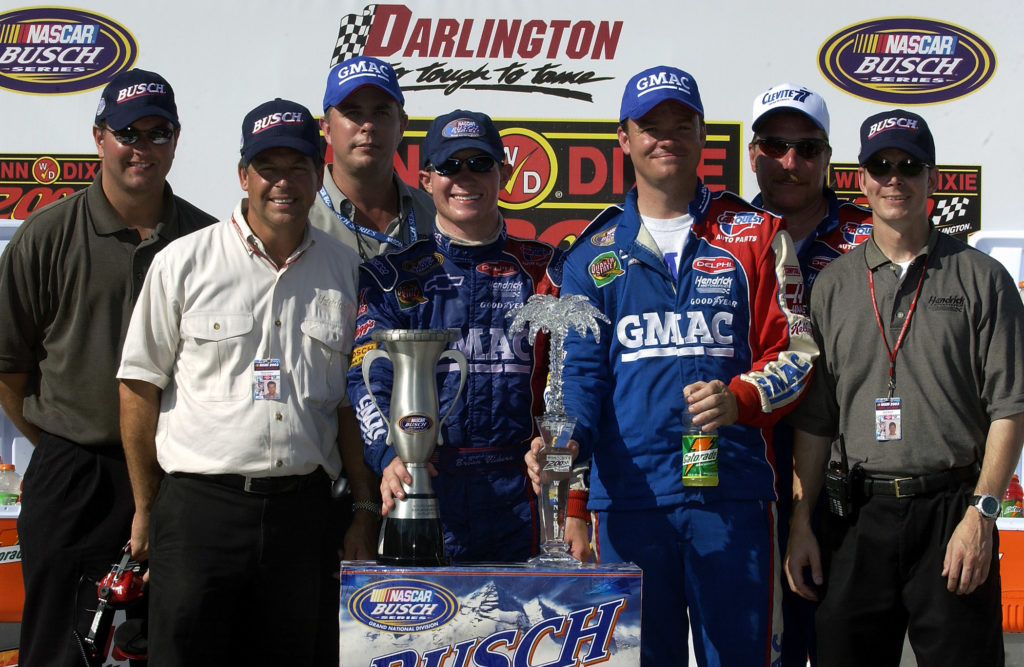
Ultimately, the joint “BLV-HMS Busch Series team” idea stalled quickly at the concept stage in part due to Hendrick’s indifference and our desire to focus on Brian’s Cup career and other commitments, particularly while facing the continued competitive struggles of the HMS #25 team which were escalating in concern. But the other factor was even back then during the “golden era” of NASCAR, as Vickers’ manager/agent I was unable to justify the business model from a fiduciary perspective and ultimately concluded with Brian Vickers and his parents that “we can field a team(s) if Hendrick agrees, and be competitive, however even with our joint sponsorship resources it will be challenging to even be revenue neutral and poses a high risk of losing money.” That was a conclusion that frankly numerous other championship NASCAR drivers and their agents/representation simply failed to adequately understand or recognize and thus many futilely invested (lost) millions of dollars similarly owning/operating their own Busch and Truck Series programs in technical partnership with their Cup teams for years thereafter. Making that decision even more cogent was the fact that Brian parted ways with HMS following the 2006 season and the impact of the “Great Recession” upon the sport between 2008-2011. So that was effectively the end of that concept from our perspective, and later following the October 2004 tragedy and loss of key personnel including Hendrick GM Jeff Turner, who was a key advocate of the Hendrick driver development program (DDP) and Busch Series program, and the extremely poor performance of the DDP drivers/program in 2005, the team effectively disbanded its DDP after just one season.
Rick and company would later relent on Vickers (and other HMS Cup drivers) competing in the series in large part due to our requests, as well as HMS’ decision to pursue more in-house driver development (which only lasted one season in 2005) and other drivers’ interest – particularly Kyle Busch. Cumulative factors included our motivations for competing part-time, the ability to attract significant sponsorship thru both our own initiatives (ex. – Pizza Hut) as well as those of HMS (Heinz/Ore-Ida, Lowes), and several other HMS projects including the phased, part-time Cup program for outgoing champion Terry Labonte (the evolution of how circumstances played out regarding the departure of Joe Nemechek, retirement of Terry Labonte and their succession by Brian Vickers and Kyle Busch in the #25 and #5 HMS Cup teams are an interesting but separate narrative for another article). So beginning in 2005-2006, Brian again returned to competing in the series part-time, together with HMS’ other drivers including Kyle Busch and Jimmie Johnson who had expressed similar desire to compete in the series, and thus the #48/#57 entries were organized and joined the #5 team to compete with mixed success. By then, teammate Jeff Gordon had no interest in any such non-Cup competition, while conversely Kyle Busch wanted to run more Busch Series events than all of the other HMS Cup drivers.
PART THREE – THE INTERSECTION OF HMS & JRM:
JR Motorsports began competing in the NASCAR Busch/Nationwide/Xfinity Series following some initial forays between 2002-2004 in local short-track amateur series; its first entry was at the final race at Homestead in 2005 with late model driver Mark McFarland and new sponsorship backing from the U.S. Navy. In another indirect twist of irony, it was well-known within the military branches’ recruiting arms that the 2003 impending Army sponsorship which our group had initially developed, together with the prior Marines, Air Force and Civil Air Patrol sponsorships, played a material role in also attracting the Navy to the sport beginning in 2003, initially with Fitz-Bradshaw Racing and later JRM beginning in 2005.
Between 2006-2007, JRM ran full-time but struggled and was generally uncompetitive – notably achieving no wins and cumulatively earning only 3 Top 5 finishes in 72 races entered between 2005-2007 with a number of different drivers.

However, in 2008, Dale Earnhardt, Jr. signed with Hendrick Motorsports to replace Casey Mears in the #25 Cup Series entry – formerly driven by Brian Vickers. Mears had originally been hired to initially replace Vickers in the #25 after our announcement of leaving for 2007 and with the concurrent move of Kyle Busch to Joe Gibbs Racing and hiring of Earnhardt, Jr. for 2008, HMS moved Mears to the #5 to take Busch’s place and put Earnhardt, Jr. with the #25 – then Mears was replaced by HMS in the #5 just one season later by Mark Martin for 2009. Most race fans (and even many competitors) forget that the #88 team was in fact formerly the #25 team and simply changed car numbers to suit Earnhardt, Jr.’s traditional use of the number “8.”
Simultaneously, with less demand/interest in the series for HMS by 2008 (Brian had already moved to Team Red Bull, Kyle Busch had moved to JGR, and little to no interest from Jimmie Johnson or Jeff Gordon), no formal HMS driver development program and sub-par results from what part-time series efforts HMS was fielding by then, those collective factors combined with the Earnhardts’ desire to further JRM and resulted in Rick Hendrick and siblings Dale Earnhardt, Jr. and Kelley Earnhardt reaching the logical decision to merge Hendrick Motorsport’s Busch/Nationwide/Xfinity Series program and resources with JR Motorsports into one unified, jointly owned program. In effect, this was fundamentally similar to the business model concept that we had informally discussed back in 2004 for BLV Motorsports and HMS. And in subsequent years, JRM has also operated as the de facto “driver development program” for HMS (something that hadn’t existed since the DDP failures of 2005) as both of HMS’ youngest Cup drivers today (Chase Elliott and William Byron) secured those opportunities after first driving in the Xfinity Series and securing championships for JRM – i.e., fundamentally the same methodology/process first demonstrated successfully with Brian Vickers and HMS in 2003, and subsequently Kyle Busch in 2004.
PART 4 – CONCLUSIONS ON RISE OF JRM:
The immediate impact of that merger with HMS upon the JR Motorsports program is unambiguous; during that initial post-merger 2008 season, JRM fielded 2 full-time entries – the #7 team (which was the former HMS #5 team absorbed by JRM) and won 2 races with Mark Martin (marking JRM’s first-ever series victory) and Ron Fellows. Their original #88 team also separately won 4 additional races during that 2008 season with driver Brad Keselowski and continued sponsorship from the U.S. Navy, effectively launching his career and later those of numerous other NASCAR drivers. JRM has since went on to capture 3 championships with drivers Chase Elliott, William Byron and Tyler Reddick, field multiple successful full-time and part-time entries and become a leading program in the series! It is certainly credible to argue from a competition perspective that the most significant event laying the foundation for what transpired between 2004-2007 with the HMS program, and the related success of the merger with JRM in 2008, was the most notable success/accomplishment in the HMS program’s history… i.e., the championship-winning 2003 season achieved by the No. 5 team of driver Brian Vickers, team owner Ricky Hendrick, crew chief Lance McGrew and team manager/spotter Michael Landis.
In my profession opinion, the very unique factors why JR Motorsports remains both competitive and (presumably) viable financially today is because: (a) it’s co-owned by 2 of the most recognized names in the sport (Hendrick and Earnhardt), (b) has the full benefit of Hendrick Motorsports’ leading engine/chassis/engineering departments and associated resources – the winningest Cup program in modern NASCAR history. Those collective factors along with various prior experience gained from the Chance 2 Motorsports success at DEI have enabled Dale Earnhardt, Jr., Kelly Earnhardt and the JRM business staff, to their full credit, to consistently maintain a championship-level of competition/success since 2008 while expanding the number of entries and attracting/retaining sponsorship dollar commitments that match or exceed other competitors, even in today’s extremely challenging climate for the sport.
That unique nexus of factors is why other championship-caliber organizations similarly owned/operated by NASCAR championship team owners and drivers in the Xfinity and Truck Series, such as RCR, Roush, Brad Keselowski, Rusty Wallace, etc., have repetitively fallen by the wayside, some while achieving on-track success comparable to JRM in the “post-HMS merger era,” yet shuttered operations in recent years facing the significant challenges of the current NASCAR team business model and market climate. The unique factor of Earnhardt, Jr.’s popularity and stability of the Hendrick/Earnhardt relationship is a key lynchpin of their business model, yet even so JRM has had to routinely opt for negotiating contracts with other drivers facilitating their own primary sponsorship funding, such as Annett and Allgaier.
EPILOGUE – CONTEXT OF INTERSECTION OF VICKERS, EARNHARDT, JR. & HMS:

As for Vickers, following the 2004 tragedy and 3 years of less than acceptable on-track performance by the #25 team, we reached the extremely difficult decision to depart Hendrick Motorsports following the 2006 season and signed Brian to become lead driver for the new Team Red Bull/Toyota team starting in 2007. In 3 memorable but often frustrating seasons in the #25 entry (2004-2006) following his historic 2003 NASCAR championship, Vickers had earned one win (Talladega) and an average points finish of 19.0. Vickers then later faced serious health issues (blood clots/heart surgery) that interrupted his career at Team Red Bull and the subsequent unexpected demise of Team Red Bull due to Red Bull withdrawing commitment/support of the NASCAR market. Yet he fought back to return driving part-time for several teams including Michael Waltrip Racing and Joe Gibbs Racing in 2012-2013 and incredibly returned to victory lane driving part-time for Michael Waltrip Racing in 2013, then competed in his final full-time season for MWR in 2014 before further health complications again interrupted his ability to compete and later MWR’s competition scandal and resulting sponsorship/funding woes contributed to that team’s demise at end of 2015.
Similarly, despite great success with DEI between 1999-2007, Dale Earnhardt, Jr. felt compelled to make the difficult decision of leaving DEI, the team his late father had co-founded, ironically due to competitiveness and off-track differences with team co-owner Teresa Earnhardt, and ultimately agreed to join Hendrick Motorsports in 2008. HMS shuffled Casey Mears to the #5 team and thus Earnhardt, Jr. became driver of the #25 team, only rebranded as the #88. In his first 3 seasons as driver of the #88 (25) program between 2008-2010, Earhardt, Jr. also earned one win (Michigan) and an average points standings finish of 19.3, before later (again, ironically) also having his career cut short by health issues (concussions) while his former DEI team folded after the 2008 season shortly following his departure and only operated several affiliate businesses thereafter.
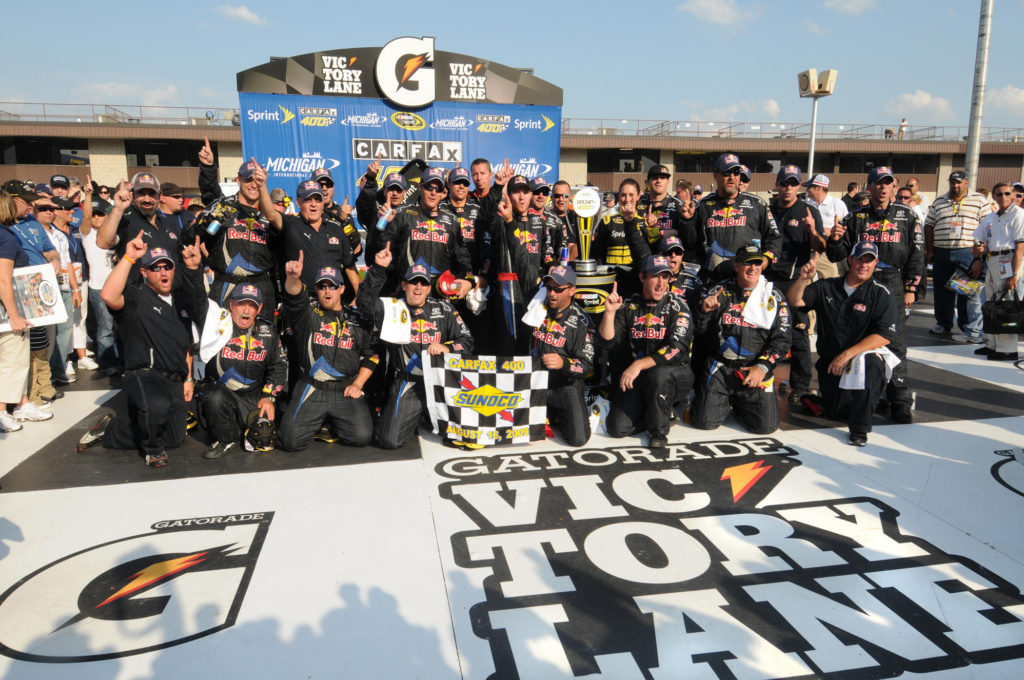
Arguably the other best comparative illustrating the similarities between the on-track results of Brian Vickers and Earnhardt, Jr. driving the HMS #25 (88) entry was the 2009 season – Vickers’ 3rd with Team Red Bull and Earnhardt’s 2nd with Hendrick Motorsports. Driving the #83 car, Vickers earned 6 pole awards, Red Bull’s first NASCAR win at Michigan and beat Kyle Busch/Joe Gibbs Racing to earn a spot in the Chase, finishing 12th in points. The success that Vickers and the #83 Team Red Bull entry achieved was also starkly in contrast to the entirely uncompetitive nature of the second #84 Team Red Bull entry, which incredibly during those same first 3 seasons between 2007-2009 managed to earn a total of only 3 Top 10 finishes and no higher than 35th in final points standings – meaning from a competition standpoint, the #83 effectively competed as a single-car team. Meanwhile in Vickers’ former #25 (88) entry out of the 4-team HMS stable that included 4-time Cup champions Johnson (#48) and Gordon (#24), Earnhardt, Jr. struggled to a career-worst 25th place in standings, no wins and only 4 Top 10’s in that same season. He and the #88 (25) team would also follow-up that up with their 3rd season at HMS in 2010, again earning no wins and 21st in the final points standings, marking the 2 worst seasons in his Cup career. It should also be acknowledged that Earnhardt, Jr. achieved significantly more success as measured by career wins, noting that he competed in a total of 21 NASCAR seasons – including 17 full-time in the Cup Series, while Vickers competed in 14 total seasons in NASCAR, but only 9 full-time in the Cup Series. Nonetheless, both drivers are former NASCAR champions in the Busch/Nationwide/Xfinity Series and multiple-time winners with different teams in the Cup Series, thus even with their disparity in career tenure and scope of accomplishments, Vickers and Earnhardt, Jr. both provide objective and validating performance benchmarks for the #25/88 HMS team having each driven the entry in multiple seasons in the same era.
Those dubious (and similarly uncharacteristic) results during Earnhardt, Jr.’s first 3 seasons with HMS in the #88 (25), combined with the above market-rate sponsorship fees commanded and extraordinary expectations associated with the Earnhardt name, compelled major changes in one form or another. Earnhardt, Jr. himself has recently admitted on his podcasts that he was concerned he might even be released by HMS, as had been the case with various prior drivers of the #25 team both before and after Vickers’ tenure. Instead, Hendrick remained committed to Earnhardt, Jr. and finally ordered sweeping changes to the #88 (25) program. And the primary precipitating factor in the significantly improved performance of the #88 (25) program with Earnhardt, Jr. beginning in his 4th season at HMS (2011) was certainly Hendrick Motorsports’ decision to pair that team at the organization’s shops with the leading program for HMS – the #48 team… a successful strategic organizational change that for the record, we had lobbied for starting in 2004 as the organization was completing its two new team shops – but Hendrick Motorsports steadfastly refused to split up the original 24/88 and 25/5 race shop pairings… until 2011. Hendrick also paired Earnhardt, Jr. with the crew chief (Steve Letarte) for Jeff Gordon and the #24 team. Following those key organizational changes, Earnhardt, Jr. substantially improved his average points finish from 19.3 (2008-2010) to 8.8 (2011-2015) and earned 8 more Cup Series races in the #88 before retiring.
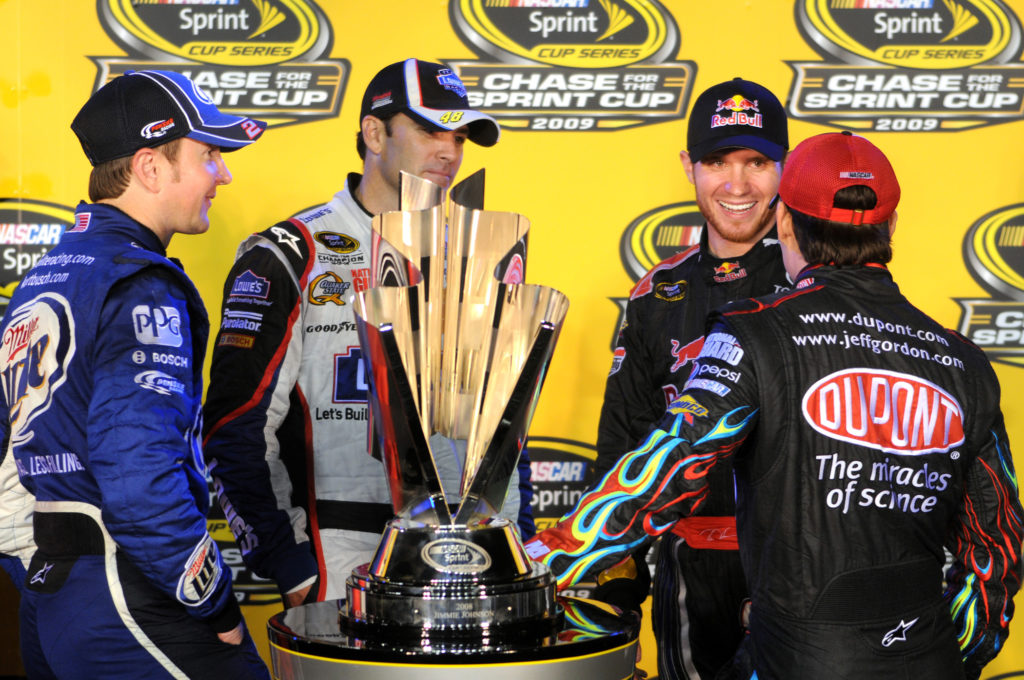
The dramatically improved performance results for both Vickers and Earnhardt, Jr. following significant strategic changes to their respective teams (Vickers’ move from the HMS #25 to the Team Red Bull #83 and the wholesale re-organization of the #88 (25) team at HMS) both conclusively proved key analysis/thesis that we had presented dating back to 2004-2006 – specifically that the overall strength of an individual team/driver’s performance has to be evaluated objectively in the context of that team vs. entire company, and that performance liabilities isolated to the #25 team (and also to lesser degree the #5 team) were systemic and primarily organizational in nature (of which any driver is certainly one responsible component). But the drivers alone were often erroneously perceived or claimed by some within the organization itself and various 3rd parties including media/fans as being the culprit, criticism that had often been directed at various times at both Vickers and Earnhardt, Jr. personally while driving the #25/88. Today, the statistical performance data for both Vickers and Earnhardt, Jr. and similar more recent competitive lulls by even the leading #24 and #48 teams substantiates that point beyond any reasonable doubt. Hence why NASCAR (and most all forms of motor sport) is considered a “Team” rather than “Individual” sport; and why from the perspective of a successful driver and team manager over the past 3 decades, the driver typically gets too much individual credit for team success, yet reciprocally too much individual blame for team failure.
The #5 and #25 teams always held unique sentimental value for HMS compared to the much newer #24 and #48 teams; the #5 was the original team founded in 1984 and the #25 was the 2nd team founded in 1986 and owned by Rick Hendrick’s beloved father, “Papa Joe” Hendrick. Likely related in part to that disparity, the reticence within HMS management to initiate any such strategic organizational changes to the #25 team in 2004-2006 (despite the clear statistical pattern of deficient performance) played a pivotal role in precipitating my management analysis and recommendation to explore other options for Brian, which resulted in signing with Team Red Bull/Toyota. The other critical evaluation factor was the highly sensitive and far-reaching fallout from the loss of Ricky Hendrick and others in the 2004 tragedy. Just as Ricky had when lobbying for Vickers’ signing in 2003 and HMS’ full support for the championship goal realized that season, we had little doubt intervention would have occurred differently in addressing the #25 team’s repetitive performance failings. The decision to leave Hendrick Motorsports was rooted in what was deemed best for Brian both personally (including maintaining his/our valued relationships with Hendrick and associates to this day) and professionally – and ultimately we were indeed proven… correct.

Yet in stark contrast to the risk exposure for any individual driver including Vickers or even someone of Earnhardt, Jr.’s unique stature, the continued overall market perception and success of an organization of HMS’ collective scale, talent and capabilities was never in question. HMS fared equally well thru our decision by later signing Earnhardt, Jr. to drive the #25 (88). And without Ricky Hendrick, Rick Hendrick and the Hendrick Motorsports organization, staff and sponsors taking a chance in 2003 on a young 19 year-old driver showing some great potential but whom lacked a famous last name and any sponsorship to buy a ride, it’s difficult to look back and predict how things would have transpired otherwise for Brian Vickers – or subsequently HMS’ Cup and Busch/Nationwide (Xfinity) programs, JR Motorsports and numerous other drivers/teams/sponsors in NASCAR in the 15 years since then. But history would have likely been written quite differently for all…

